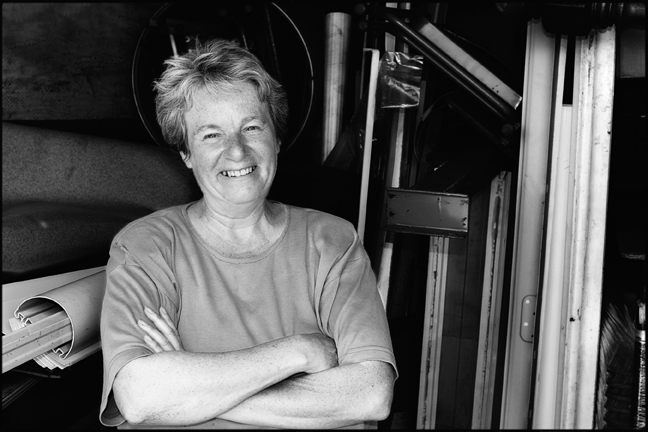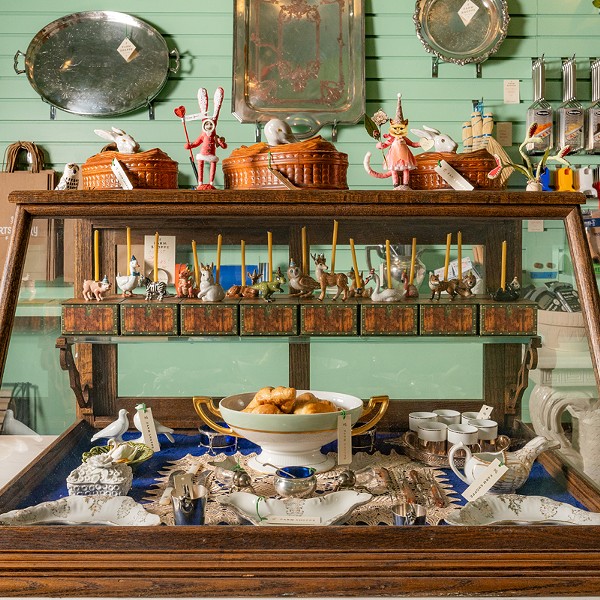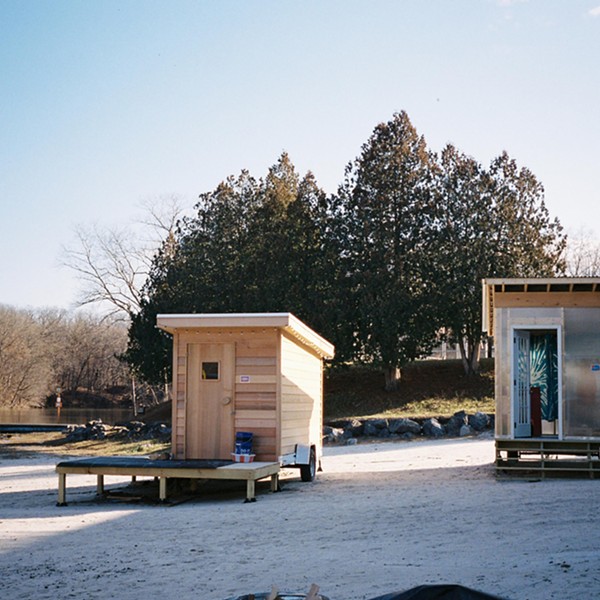
At the Hudson Valley Materials Exchange, one might find an item as small as the spine of a three-ring binder or something as large as a window unit. “Stuff Central,” as Newburgh native and reduce waste Originally created as a municipal program in the Town of New Paltz to catalogue local materials waste in 1993, the HVME has grown into a place that creates the possibility for useful exchange among the local community. Gruber also runs programs in area schools, teaching students how the materials, with a little bit of imagination, can make the amazing transformation into art.
Since 2001, the organization has been housed in a 10,000 square-foot warehouse at Stewart Airport, where shoppers could browse at their leisure. Following the recent purchase of Stewart by the Port Authority, HVME moved to Town of New Paltz Transfer Station in June. Instead of its former warehouse set-up, the format will be much like that of an open-air market housed in a succession of trailers. Shoppers can now browse the myriad items Gruber has saved by browsing a series of trailers, each with an aisle down the center. More of Gruber’s “stuff” will be housed out in the open; in the future, Gruber hopes to see the entire operation under a large tent for shelter.
For more information: www.hvme.com.
What was the initial spark of inspiration for the Hudson Valley Materials Exchange?
I was originally the recycling coordinator of both New Paltz and Saugerties. It was really an eye-opener to see all the stuff that we got that could be reused. The one moment that sticks out in my mind was this guy who came with a pickup truck full of perfectly good clay flower pots. I said to myself, “There needs to be some kind of a system to capture this kind of stuff.”
At that time, legislation was also being put into place where the government was telling businesses how to manage their waste. I wanted to understand, as a person who had worked in both the public and the nonprofit sector, how businesses worked. I thought that the only way to do that was to run a business myself.
Also, part of it is that I’ve always been a packrat. It was great having 10,000 square feet of stuff that I didn’t have to take home with me.
What makes the Hudson Valley Materials Exchange different from other materials exchange programs?
We are the only program that does both [retrieval and dispersal]. We rescue materials and make them available to the public, and we also have our education program. Education is a big part of the Hudson Valley Materials Exchange. Most organizations are an either/or kind of deal. I’m really looking to partner with schools in the area and teach them about different recycling methods, and using art as a recycling tool. We are a great resource for teachers, and they can create an account with us. Bard College has been really good about using us. Teachers from Bard will bring their students down on fieldtrips and have them create projects based on the pieces they find. Unfortunately, most schools don’t use us enough or don’t even know about us. Now that we have a new home, I’m looking for different ways to change that.
What can we do in their day-to-day lives to become more conscientious consumers?
Another goal of ours is to come up with simple things people can do that have not been talked about before. One thing the Hudson Valley Materials Exchange works educating people about is default margins on a computer. Thanks to Bill Gates, the margins on a printed document are 1.25 inches on the side and 1 inch on the top and bottom. If you reduce that to the minimum margin that the printer will take, it saves 30 percent on paper. And it takes about 30 seconds to do.
Another one that I personally work on is “phantom load.” That’s when your electronics stand ready so they don’t have to warm-up. For example, if your modem is still on, its using energy, even if the computer is off. By turning those things off, you can save substantial amounts energy.
















